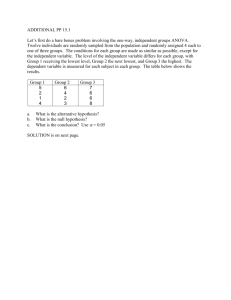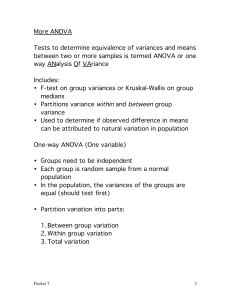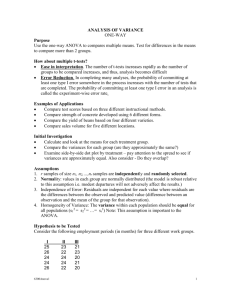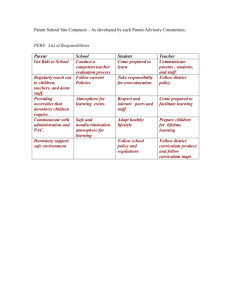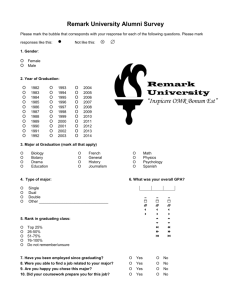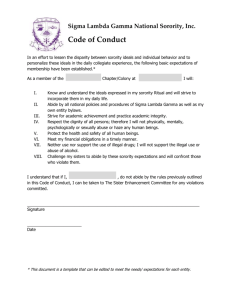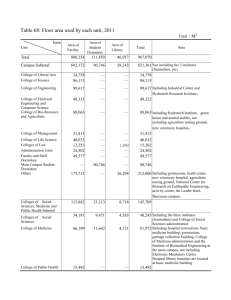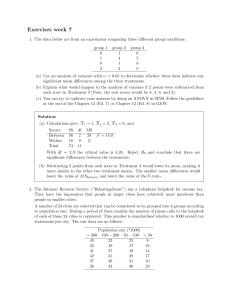THE RELATIONSHIP BETWEEN THE ANALYSIS OF VARIANCE
advertisement
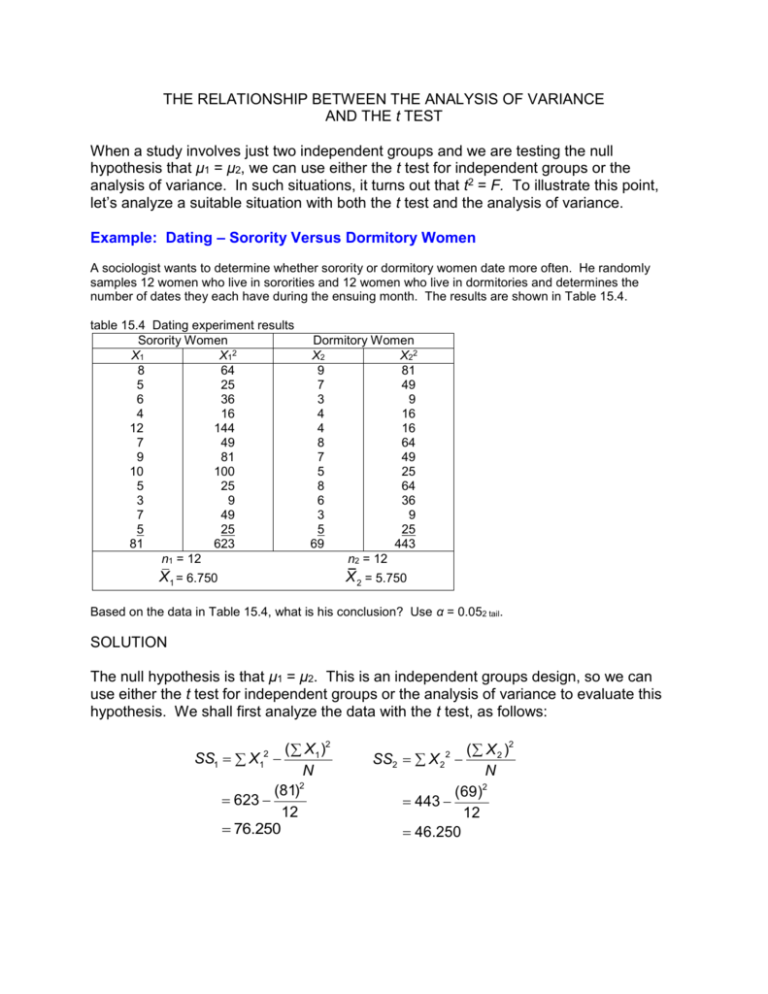
THE RELATIONSHIP BETWEEN THE ANALYSIS OF VARIANCE AND THE t TEST When a study involves just two independent groups and we are testing the null hypothesis that μ1 = μ2, we can use either the t test for independent groups or the analysis of variance. In such situations, it turns out that t2 = F. To illustrate this point, let’s analyze a suitable situation with both the t test and the analysis of variance. Example: Dating – Sorority Versus Dormitory Women A sociologist wants to determine whether sorority or dormitory women date more often. He randomly samples 12 women who live in sororities and 12 women who live in dormitories and determines the number of dates they each have during the ensuing month. The results are shown in Table 15.4. table 15.4 Dating experiment results Sorority Women X1 X12 8 64 5 25 6 36 4 16 12 144 7 49 9 81 10 100 5 25 3 9 7 49 5 25 81 623 n1 = 12 Dormitory Women X2 X22 9 81 7 49 3 9 4 16 4 16 8 64 7 49 5 25 8 64 6 36 3 9 5 25 69 443 n2 = 12 X 2 = 5.750 X1 = 6.750 Based on the data in Table 15.4, what is his conclusion? Use α = 0.052 tail. SOLUTION The null hypothesis is that μ1 = μ2. This is an independent groups design, so we can use either the t test for independent groups or the analysis of variance to evaluate this hypothesis. We shall first analyze the data with the t test, as follows: ( X1 )2 SS1 X N 2 (81) 623 12 76.250 2 1 ( X 2 )2 N 2 (69) 443 12 46.250 SS2 X 22 tobt X1 X 2 SS1 SS2 n(n 1) 6.750 5.750 76.250 46.250 12(11) 1.000 1.038 1.04 0.963 With α = 0.052 tail and df = N – 2 = 22, from Table D in Appendix D, tcrit = ±2.074 Since ItobtI < 2.074, we retain H0. We cannot conclude that the sorority or dormitory women date more often. This problem can also be solved with the analysis of variance. The solution is shown here. STEP 1: Calculate SSB: all scores X 2 X2 n2 N 2 X12 SSB n1 (81)2 (69)2 (150)2 12 24 12 6.000 STEP 2: Calculate SSW: all scores ( X1 )2 ( X 2 )2 SSW X n2 n1 2 (81)2 (69)2 1066 12 12 122.500 STEP 3: Calculate SST: all scores X all scores SST X 2 N 2 (150) 1066 24 128.500 2 As a check, SST SSB SSW 128.500 6.000 122.500 128.500 128.500 STEP 4: Calculate df: dfB k 1 2 1 1 dfW N k 24 2 22 dfT N 1 24 1 23 STEP 5: Calculate sB2: sB 2 SSB 6.000 6.000 dfB 1 STEP 6: Calculate sW2: sW 2 SSW 122.500 5.568 dfW 22 STEP 7: Calculate Fobt: Fobt sB 2 6.000 1.078 1.08 sW 2 5.568 With α = 0.05, dfnumerator = 1, and dfdenominator = 22, from Table F, Fcrit = 4.30 Since Fobt < 4.30, we retain H0. We cannot conclude that sorority or dormitory women date more often. Note that we have reached the same conclusion with both the t test and the F test. A comparison of the two obtained statistics and the associated critical values are shown here: tobt2 = Fobt (1.04)2 = 1.08 1.08 = 1.08 tcrit2 = Fcrit (2.074)2 = 4.30 4.30 = 4.30 Thus, in the independent groups design, when there are two groups and we are testing the null hypothesis that μ1 = μ2, tobt2 = Fobt and tcrit2 = Fcrit. Therefore, both tests give the same result.
